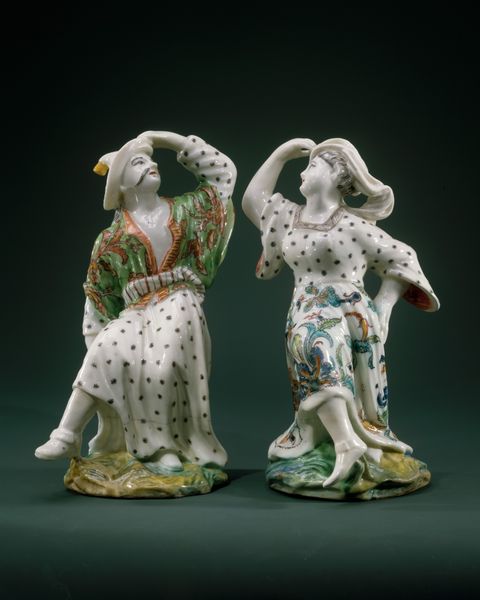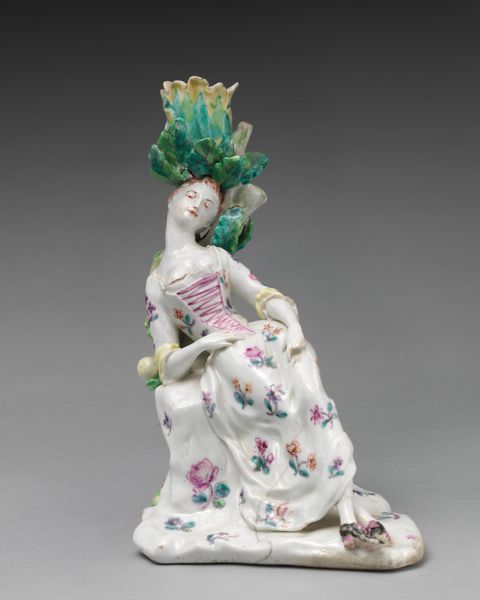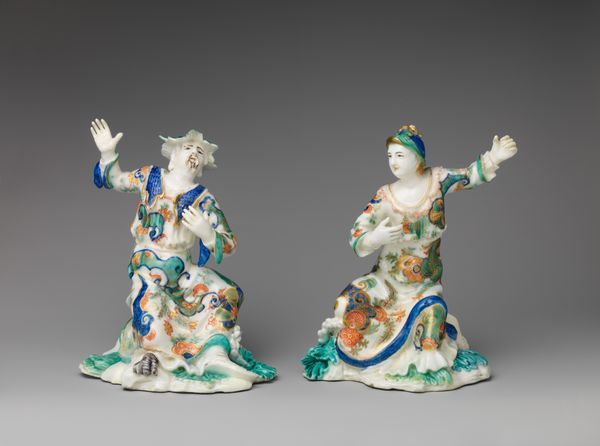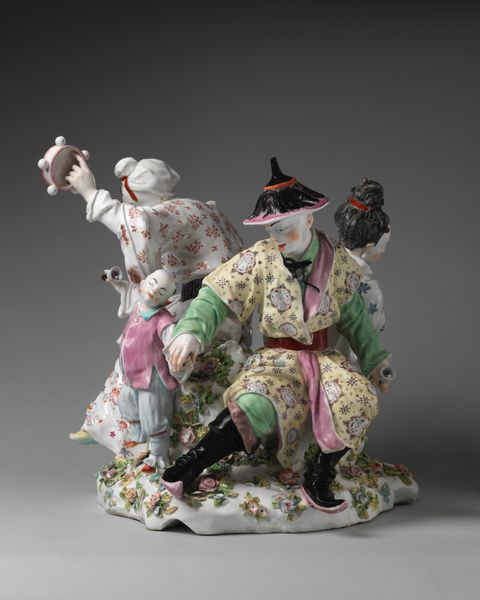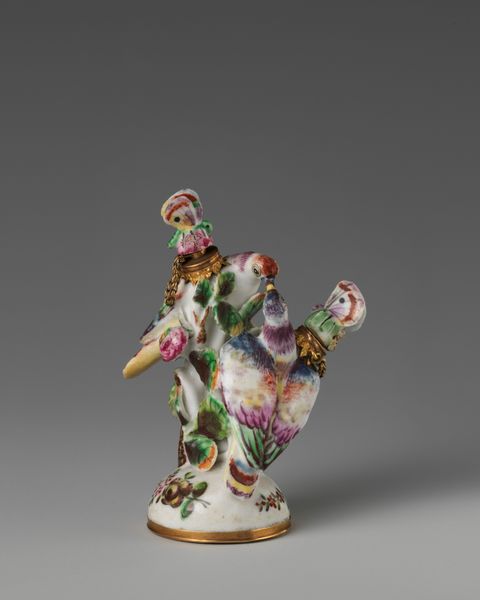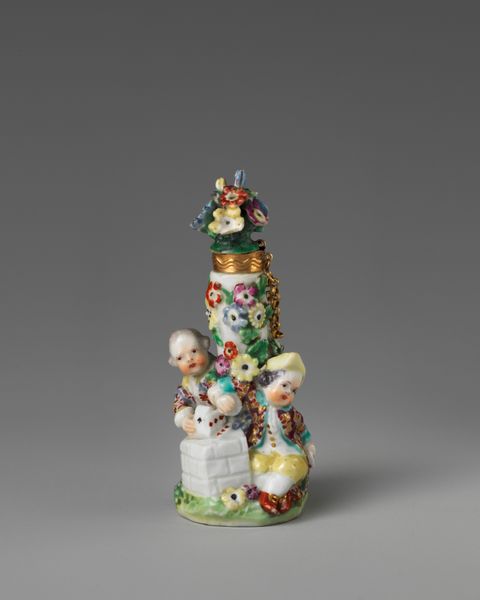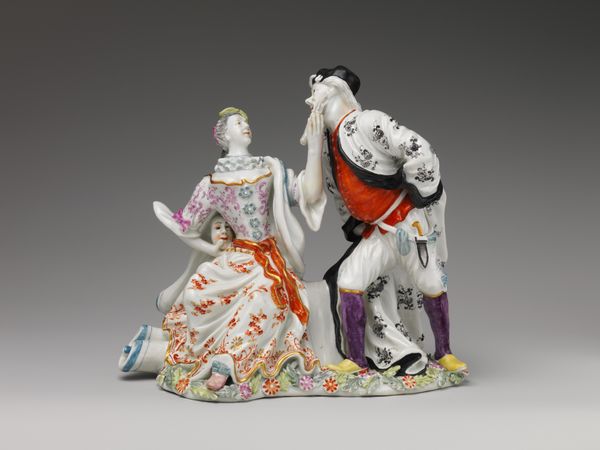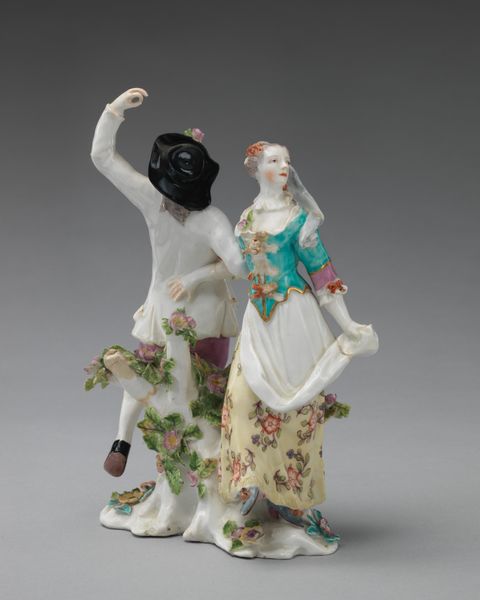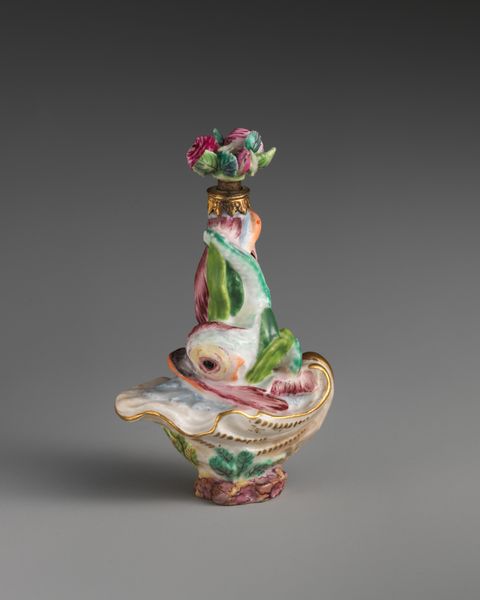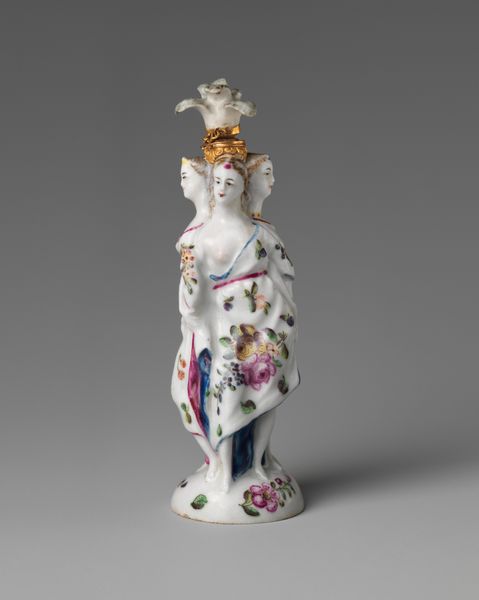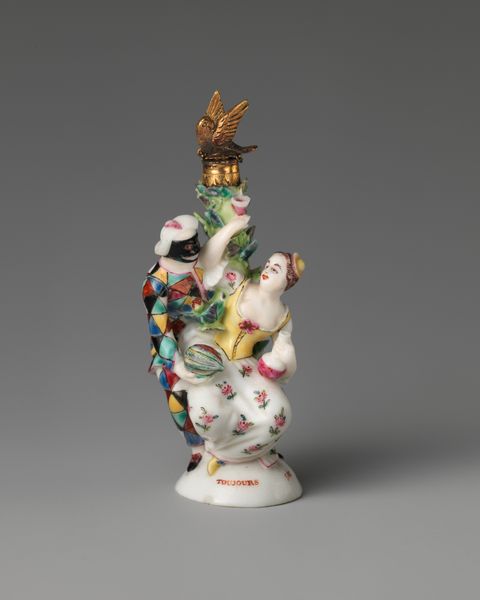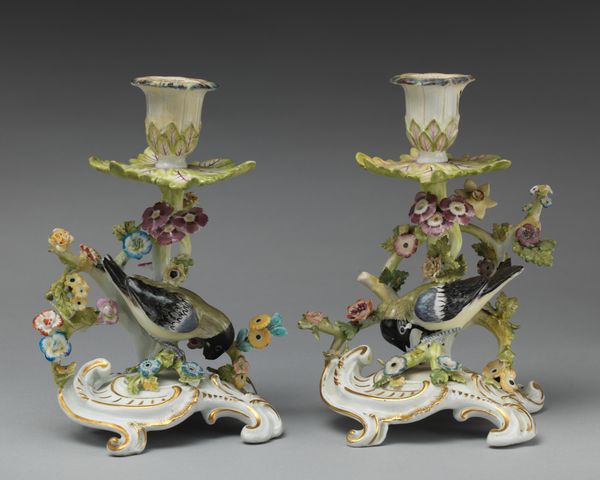
ceramic, porcelain, sculpture
#
animal
#
ceramic
#
porcelain
#
figuration
#
sculpture
#
ceramic
#
decorative-art
#
rococo
Dimensions: Overall (confirmed): 18 3/4 × 10 3/4 × 6 13/16 in., 10 lb. (47.6 × 27.3 × 17.3 cm, 4.5 kg)
Copyright: Public Domain
Curator: I find these ceramic peacocks immediately striking, elegant even, with their simplified palette. Editor: Yes, there's something remarkably restrained about them. All that porcelain, glazed and painted; one immediately considers the kilns and workshops of the Chelsea Porcelain Manufactory where they were created between 1750 and 1763. A pair of striking sculptures in their time! Curator: These pieces seem like echoes of older symbolic forms. Think of the peacock's association with immortality, renewal—perhaps because the ancients believed their flesh didn't decay. The jewel-toned accents resonate like the stained glass of sacred spaces, giving them a nearly religious presence. Editor: An association between material splendor and divine right certainly isn't surprising in this Rococo era artwork! While you are exploring these symbolic forms, let's not lose sight of the artistry and expertise it would require to produce something like this with clay. Consider the meticulous detail, from each individual ‘eye’ on the feathers to the naturalistic modelling of foliage; the piece as a whole communicates the status and tastes of the patron. It required significant material resources to source porcelain clay, which could only be found by traversing land and sea, for an object intended solely for aesthetic appreciation. Curator: Precisely, it's all carefully composed for maximum impact. Peacocks often signify pride or vanity too, and in the decorative arts especially, this flamboyant display is exactly the point. Consider their gaze… slightly haughty? Editor: A little conceited, maybe, but it's precisely the social function of art to elevate or signal. To commission or own pieces like these porcelain peacocks said something very specific about who you were in eighteenth-century London. The cost of these extravagant works speaks to labor specialization, material access, trade, and class. It gives us insight into society at large, beyond aesthetic concerns. Curator: You’re right. Looking closely helps reveal layers, not just of meaning, but also history and human effort. Editor: It certainly does. Each porcelain element carries stories within it. A testament to artistic traditions!
Comments
No comments
Be the first to comment and join the conversation on the ultimate creative platform.
